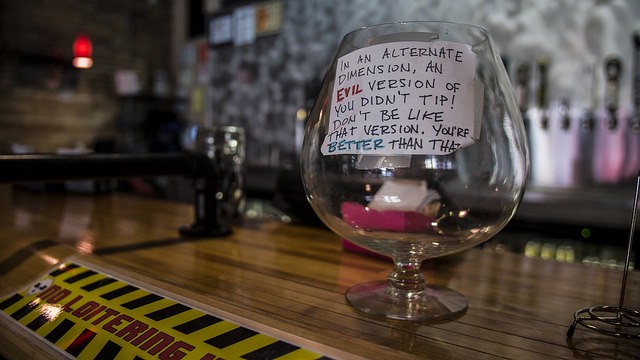The Tipping Point

Amongst the ranks of elite restaurateurs and critics, a consensus has been forming over the last couple of years that the Death of Tipping is upon us, at least in theory. In recent weeks, Danny Meyer has announced that tipping will be abolished at all of his restaurants, while Tom Colicchio has ended tipping at Craft during lunch hours (for now); many restaurants at the pinnacle of fine dining, like Alinea and Per Se, eliminated tipping years ago.
But as one contemplates the Death of Tipping, one of the questions is whether the American dining public writ large — i.e., people who do not dine out primarily in trend-setting restaurants in major American cities — will accept it as it trickles downstream, given that, in exchange for paying cooks and servers a living wage, it strips diners’ God-given right to dispense economic rewards and punishment as they see fit. For many — most? — the act of tipping, and the threat of not tipping, is less about rational economics than it is about the exercise of power by people who have often relatively little of it over people who generally have even less.
Numerous studies have found that restaurant customers tip more for better service, even when controlling for potential confounds and reverse causal effects… Nevertheless, the relationship between service quality and tip size is rather weak (a correlation coefficient of only .2) suggesting that consumers desire to reward service quality does not appear to be as strong a motive for tipping as self-reported by consumers themselves.
Of course, anyone who has been a server doesn’t need to read a study to know that the quality of service often has little to do what’s left on the table at the end of the meal; a tip is more often than not an insurance policy that a server will willfully accept certain levels of abuse.
But there are now other, less crude, more efficient ways ways to influence the livelihoods of service workers, like the increasingly pervasive ratings system. Diners already love threatening entire restaurants with a poor rating on Yelp or Foursquare, so just imagine the thrill of not merely withholding a small sum of money from a server because he didn’t refill your glass of Diet Coke promptly every time it dipped below the one-third mark, but directly determining whether or not that server is even employed! That is accountability. Consider the lengths that Uber drivers go to maintain their ratings — and their jobs, as recounted by Josh Dzieza:
Many drivers advised smiling and nodding, deflecting potentially controversial topics, and generally avoiding engaging riders any more than absolutely necessary. Several drivers placate riders with bottled water and candy. Another offers them charging USBs and Tide pens. Some offer control of the music, a practice encouraged by Uber’s partnership with Spotify. Several drivers said the best way to behave is like a servant. “The servant anticipates needs, does them effortlessly, speaks when spoken to, and you don’t even notice they’re there,” said a driver in Sacramento.
That driver would be a fantastic server, definitely a solid 4.9 rating.
The technical implementation of an industry-wide ratings system would be more trivial than it seems: There’s a small gold rush right now in trying to take over restaurants’ computer systems, with startups promising to bundle everything from reservations to takeout orders to diner profiles and check payments into a single, seamless system. It’s unclear which systems will win, but conversations with chefs and managers about the dismal state of the restaurant industry’s technological infrastructure have made it clear that the benefits of upgrading to these systems are so extraordinary that it’s only a matter of time before every restaurant is on one. Many will let diners do everything from an app on their phone, and considering how much people love to rate things, especially restaurants — it’s the entire basis of Yelp — what’s one more screen for them to rate their server or cook or barista or bartender?
Meanwhile, as the cost of living in some cities continues to rise and the state-by-state march toward higher minimum wage proceeds — in New York, Governor Cuomo is pushing for a fifteen-dollar-an-hour minimum wage for fast-food workers — restaurant owners have little choice but to to experiment with how to most effectively compensate their staff while staying in business. It’s clear that diners are going to have to pay more, one way or another, but a feeling of greater control — of more power — is maybe one to make them a little more okay with it.
Photo by Aberro Creative
